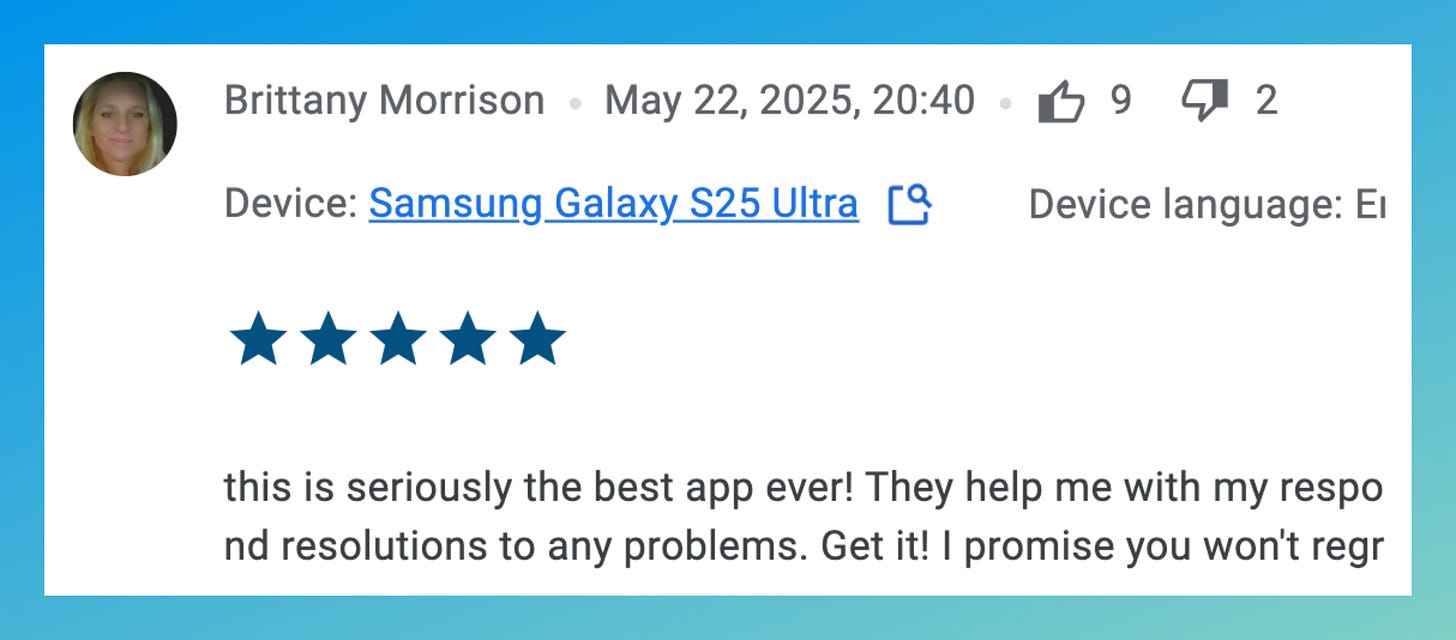Profitable App Growth - July 11 2025
Can Bid Caps Lower CPI? Is High Revenue Growth Sustainable? How to Target Countries Effectively on Meta? What did I learn from the Meta event this week?
📌 Quick Thoughts from Samet
This week, we're exploring practical insights on bid caps, audience targeting, sustainable growth strategies, trust issues with Meta 💔, and fresh learnings from a recent Meta event. Let's dive in.
🚦 Bid Cap Experiments: Can They Lower CPI?
I tested bid caps for my stealth app to control rising CPI in trial-optimized campaigns, typically 10x higher than install campaigns (I mean, seriously?). Surprisingly, applying a bid cap on a fresh campaign stopped ad spending completely, triggering an orange warning. My takeaway: Bid caps are complex and might not always yield expected results. Sometimes, temporarily shelving an idea is best. 🫠
🌍 Meta Audience Targeting: Why Country Spend Matters
We often prioritize age, gender, and placement but underestimate the importance of countries. Meta's country spend can be significantly skewed, with most of your budget often going to just a couple of countries out of many targeted. And shifts occur.
Tip: Separate high-spend markets like the US into standalone campaigns to better balance budget and performance.
💸 High Revenue vs. Sustainable Growth: What's the Real Story?
I've been questioning posts celebrating massive revenue alongside sub-100% ROAS. Spending more per user than you earn isn't sustainable growth; it might be an expensive illusion fueled by cash injections and optimism rather than real profitability.
In contrast, solopreneurs generating $100K organically without ads might actually demonstrate healthier and more disciplined growth.
🎯 Meta's Ad Delivery: Trust, but Verify
Usually, Meta's algorithm efficiently allocates ad spend - but occasionally, it quickly funnels most of your budget into a single ad.
My solution: Temporarily apply ad-level spend limits to make sure all recent creatives get fair testing, avoiding premature decisions based solely on quick algorithm judgments.
🌟 Measuring App Satisfaction Beyond Reviews
Want a straightforward way to gauge true user sentiment? Look beyond reviews and focus on how users rate reviews.
📊 New Rules of Attention Marketing from Meta's Latest Event
At a recent official Meta event in Berlin, I learned key insights about attention marketing based on new research.
📊 What the latest Meta for Business + Lumen Research + Playground xyz research tells us about attention:
More isn’t always better. A single 10-second view doesn’t beat multiple 2-second bursts. 🧠 Brand recall improves more with repeat short exposures than long uninterrupted views.
Short-form wins - when repeated. Awareness peaks when users see 4–5 ads for 1.5–3 seconds each. 💡 Sweet spot: 1.5–2 seconds × 4 = +3.1% lift.
Aggregate attention > continuous attention. Across video campaigns, users with repeated short views converted 21% higher than those with one-off long exposures. Source: Meta internal analysis, March - April 2024
Creative is still the Quing 👸🤴. Great creative earns attention, but the kind that sticks: voluntary, emotional, and memorable. → Voluntary views (even without sound) scored highest on recall.
Frequency beats dwell time. Best results came from: 4 exposures, 1.5–2 seconds per view. Going beyond 3–5 seconds in a single view = diminishing returns.
TL;DR: In attention marketing, frequency beats duration.
Short bursts. Right timing. Creative-led.
More on my learnings next week.
🔍 Expanding the ROAS Formula: Intent, Fit, Funnel, and Cost
💡 ROAS ≈ (Intent × Fit × Funnel Strength) ÷ Cost
In the past, I shared this equation as a way to frame how ROAS really works. But there’s more nuance to unpack, especially when it comes to intent and funnel strength.
The other day I saw someone praising Apple Search Ads for being "high intent but underused." That’s only part of the story. Intent alone doesn’t pay your bills.
Let’s break it down:
🔹 Intent = Readiness to act
You can have the right person at the right time, but if they’re unwilling or unable to pay, intent means little. Intent gets you in the door, but it doesn't guarantee revenue.
🔹 Fit = Message–user alignment
How well your ad matches what the user is actively looking for.
🔹 Funnel Strength = Onboarding, pricing, retention
This deserves two sub-points:
Onboarding + paywall clarity – FTUE still matters, but it’s not the whole story.
Pricing strategy – Even with perfect onboarding, if your price is off (too high, too soon, or poorly packaged), conversion breaks down. – Willingness to pay is a layer within both intent and funnel strength.
Also, note: Funnel strength applies across all channels equally. Unlike intent or cost, it's channel-agnostic.
🔹 Cost = How much you’re paying to acquire
Often overlooked, but always relevant.
Bottom line: Don’t over-index on intent. ROAS lives in the interplay between readiness, relevance, and the road you’ve built to monetization.
🤔 Meta’s Precise Ad Delivery: Confirmed
I previously doubted if individual ads within a single Meta ad set were accurately served to their intended demographics. Recent data confirms that Meta precisely targets ads at the ad level, ensuring gender-specific or highly targeted creatives reach the correct audience.
📌 Subscription Pricing Realities
Important reminder: If your trial acquisition cost is $30 on Meta, a $40 annual subscription isn't viable. Either position your product at premium pricing or diligently reduce acquisition costs. Profitability is about disciplined strategy, not wishful thinking.
Thank you for reading. See you next week! 👋
Samet Durgun, Growth Therapist 🌱






